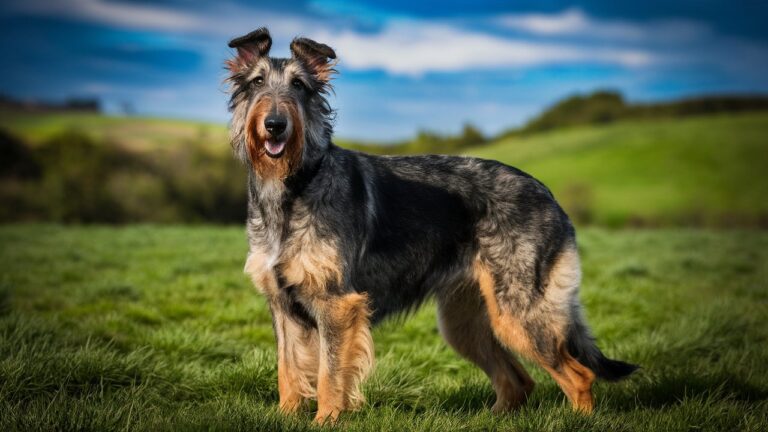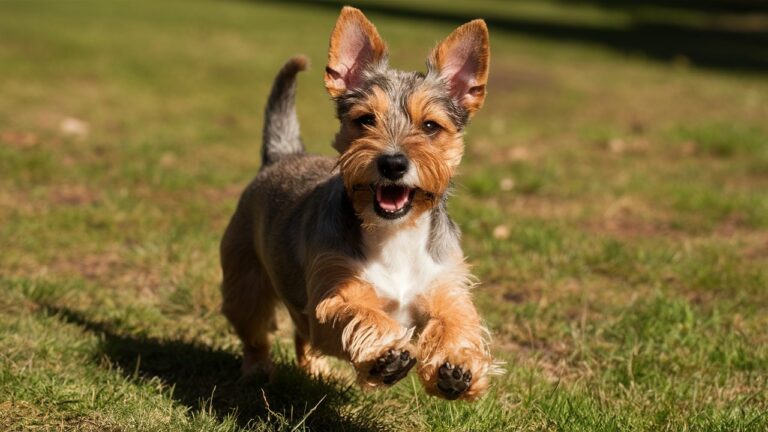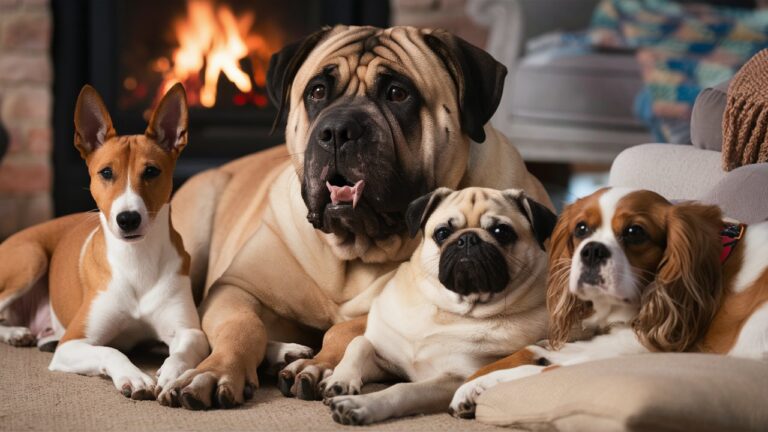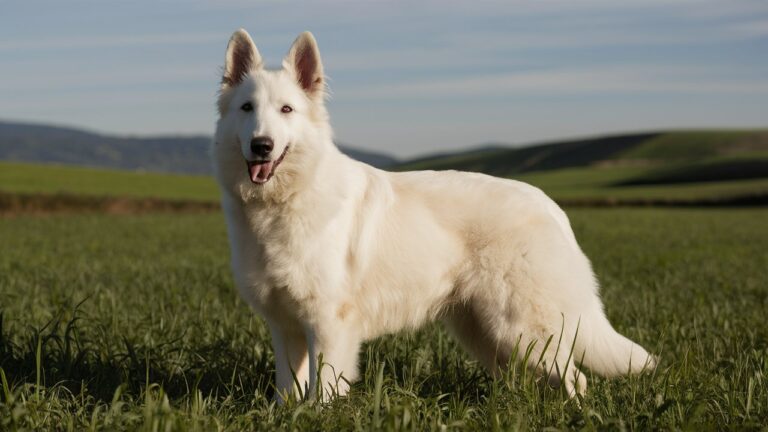Mudi Hungarian Herding Dog 100% Ultimate Guide: Exceptional
The Mudi, a lesser-known Hungarian herding dog, has captured the hearts of dog enthusiasts worldwide. Known for its intelligence, versatility, and agility, the Mudi is a remarkable breed that deserves more recognition. This guide delves into the history, characteristics, training, and care of the Mudi, offering personal anecdotes and stories to bring the breed to life.
Table of Contents
ToggleHistory of the Mudi
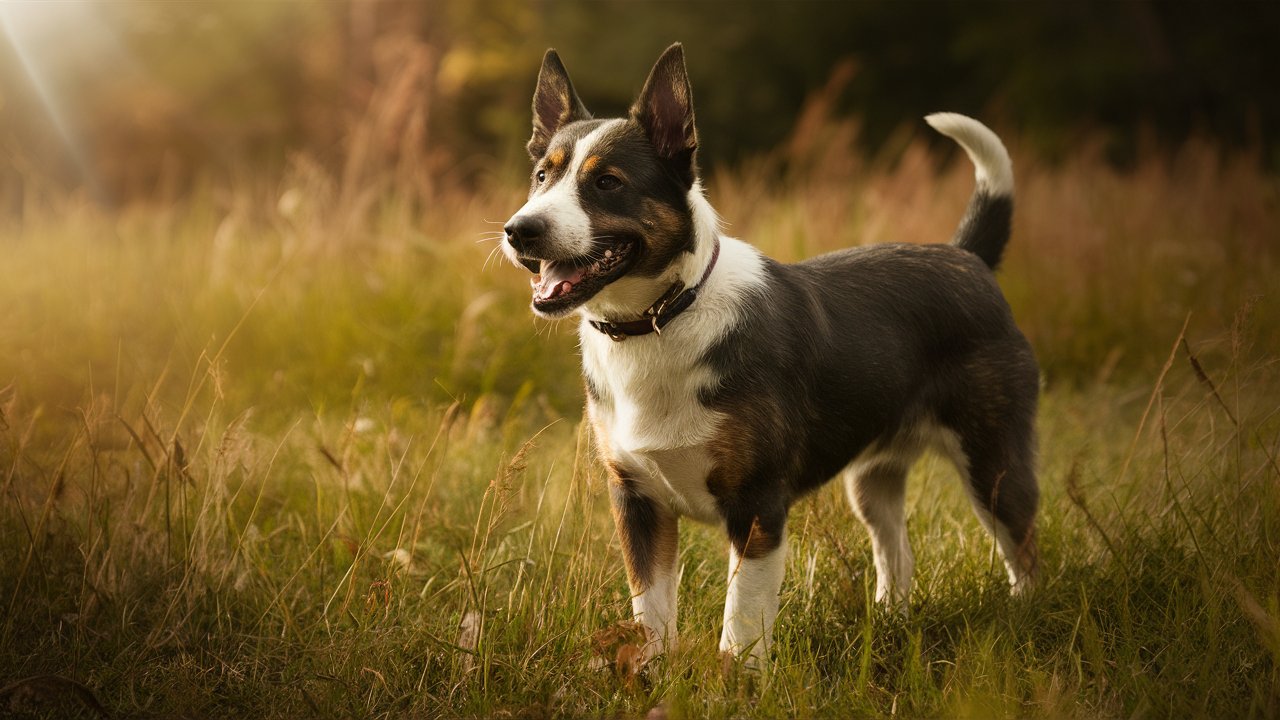
The Mudi’s history is a fascinating journey through time, reflecting the breed’s development alongside the rural and agricultural evolution of Hungary. This unique herding dog has deep roots in Hungarian culture and has played a crucial role in the daily lives of shepherds and farmers for centuries.
Early Origins
The Mudi’s origins can be traced back to the 18th and 19th centuries in Hungary, where the breed emerged as a distinct type among the various herding dogs used by local shepherds. The exact ancestry of the Mudi is somewhat unclear, but it is believed that the breed developed from a mix of indigenous Hungarian herding dogs and various imported European breeds. Some experts suggest that the Puli, Pumi, and German Spitz may have contributed to the Mudi’s genetic makeup.
These early Mudis were highly valued for their herding abilities, intelligence, and versatility. They were not just herders but also guardians of livestock, helping to protect sheep, cattle, and other animals from predators and thieves. The breed’s agility and speed made it an excellent choice for herding in the varied and often challenging terrains of Hungary.
Official Recognition
The Mudi was officially recognized as a distinct breed in the early 20th century. Dr. Dezső Fényesi, a Hungarian veterinarian and dog breeder, played a pivotal role in the breed’s recognition. In the 1930s, Dr. Fényesi began documenting and standardizing the breed’s characteristics, leading to the establishment of the first breed standard. He was instrumental in bringing attention to the Mudi’s unique qualities and promoting it as a valuable working dog.
The breed was officially recognized by the Fédération Cynologique Internationale (FCI) in 1966, which helped to solidify its status within the global dog community. The FCI’s recognition was a significant milestone, allowing the Mudi to participate in international dog shows and competitions.
The Role of the Mudi in Hungarian Culture
Throughout its history, the Mudi has been more than just a working dog; it has been a vital part of Hungarian rural life. The breed’s versatility allowed it to perform a variety of tasks beyond herding, including hunting, guarding, and even serving as a companion animal.
One of the most remarkable aspects of the Mudi is its adaptability. These dogs were equally comfortable working in the plains, mountains, and forests of Hungary. They could herd sheep, cattle, and even pigs, showcasing their incredible flexibility and intelligence. This adaptability made this breed an indispensable asset to Hungarian shepherds and farmers, who relied on these dogs for their daily operations.
The Impact of World War II
Like many breeds, the Mudi faced significant challenges during World War II. The war caused widespread devastation in Europe, leading to a decline in the population of many dog breeds. Many dogs were lost during the war, and the breed’s numbers dwindled dramatically.
However, thanks to the dedication of a few passionate breeders, the Mudi survived this challenging period. These breeders worked tirelessly to preserve the breed, carefully selecting dogs for breeding to maintain the Mudi’s distinctive characteristics and working abilities.
Modern Development and Global Recognition
In the decades following World War II, the Mudi slowly regained its footing. Breeders continued to focus on the breed’s working capabilities, ensuring that the Mudi retained its herding instincts, intelligence, and versatility. The breed also began to gain recognition outside of Hungary, with enthusiasts in other countries discovering the Mudi’s unique qualities.
Today, this breed is recognized by various kennel clubs around the world, including the American Kennel Club (AKC), which added the breed to its Foundation Stock Service (FSS) in 2008. This recognition has helped to increase the breed’s visibility and popularity on a global scale.
Despite its growing recognition, this dog breed remains a relatively rare breed. Enthusiasts and breeders are dedicated to preserving the breed’s unique characteristics while promoting responsible breeding practices. Efforts are ongoing to ensure that the Mudi remains true to its heritage as a versatile and hardworking herding dog.
Personal Anecdotes: The Mudi’s Legacy
To truly understand the significance of the Mudi, it’s helpful to hear stories from those who have experienced the breed’s unique qualities firsthand. One such story comes from János, a Hungarian shepherd who has worked with Mudis for over three decades.
János recalls a particularly harsh winter when a heavy snowfall trapped his flock in a remote part of the pasture. The snow was so deep that it was impossible for János to reach the sheep on foot. He relied on his trusty Mudi, Róka, to help. Róka navigated the deep snow with ease, using her keen sense of direction and intelligence to find the stranded sheep. She led the flock back to safety, saving them from the freezing temperatures. János credits Róka’s quick thinking and determination with saving his livelihood that winter.
Another story comes from Erika, a dog trainer who discovered this breed potential in dog sports. Erika’s Mudi, Blitz, excelled in agility competitions, thanks to his speed, agility, and eagerness to learn. Blitz’s success in the agility ring earned him numerous titles and accolades, showcasing the breed’s incredible versatility and athleticism.
Characteristics of the Mudi
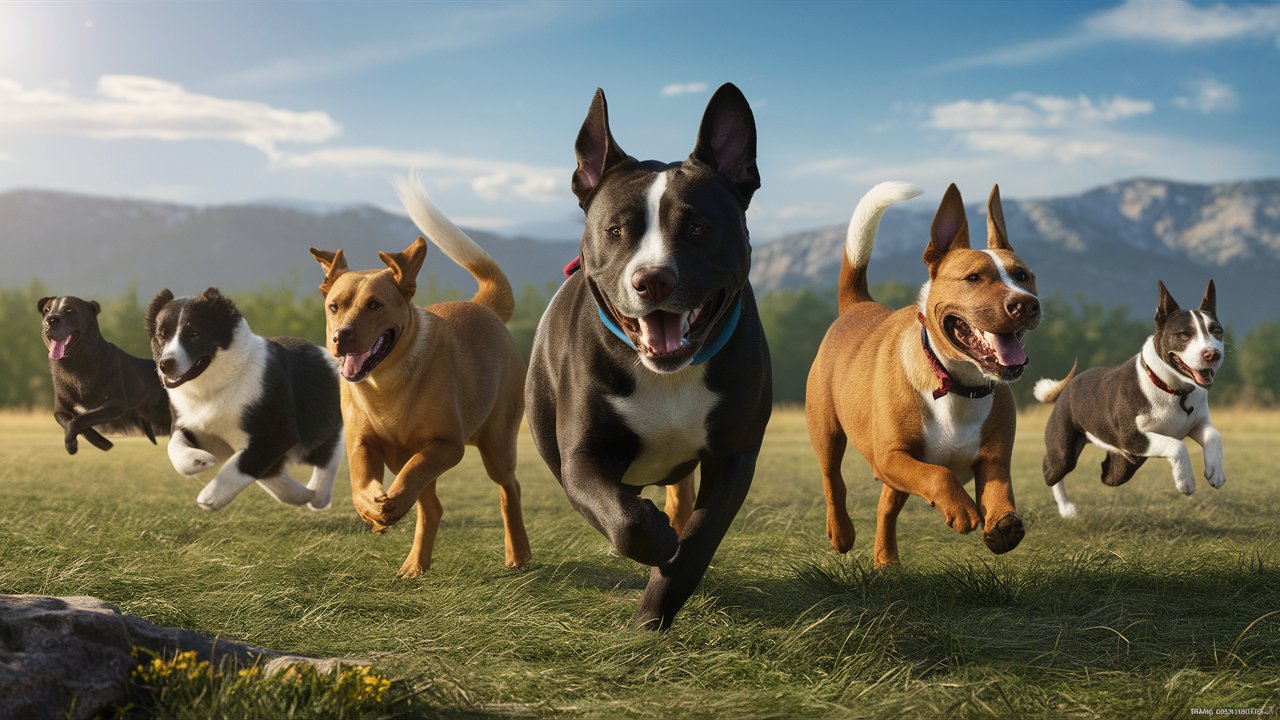
The Mudi is a captivating breed with a unique blend of physical and behavioral traits that make it stand out. Here, we explore these characteristics in greater detail to provide a comprehensive understanding of what makes the Mudi so special.
Physical Attributes
Size and Build
- Height: Mudis typically stand between 15 to 19 inches (38 to 48 cm) at the shoulder.
- Weight: They usually weigh between 18 to 29 pounds (8 to 13 kg).
- Build: The Mudi has a lean, muscular build that reflects its agility and endurance. This breed is built for speed and stamina, making it an excellent herding dog.
Coat and Colors
- Coat Texture: The Mudi’s coat is one of its most distinguishing features. It is medium-length and can be wavy or curly, giving the dog a distinctive, textured appearance.
- Colors: Mudis come in a variety of colors, including black, white, fawn, ash, blue-merle, and various shades of grey. The merle pattern, in particular, is quite striking and is often seen in this breed.
- Shedding: Mudis shed seasonally. Regular brushing helps manage shedding and keeps the coat in good condition.
Facial Features
- Eyes: The Mudi’s eyes are almond-shaped and typically dark brown, giving the dog an intelligent and expressive look. Some merle Mudis may have blue or partially blue eyes.
- Ears: The ears are erect and triangular, enhancing the Mudi’s alert and attentive expression. These ears are highly mobile and can be quite expressive.
- Tail: The tail of a Mudi can be straight or curled and is often carried in a natural arch when the dog is relaxed.
Temperament and Personality
Intelligence
- Mudis are incredibly intelligent dogs, often ranking high in problem-solving and obedience tasks. Their quick wits make them highly trainable and capable of learning complex commands and tricks.
Work Ethic
- Historically bred for herding, Mudis have a strong work ethic. They thrive in environments where they have a job to do, whether it’s herding livestock, participating in dog sports, or learning new tasks at home.
Versatility
- The Mudi is a versatile dog that can adapt to various roles. They excel in herding but are also successful in agility, obedience, flyball, and even search and rescue operations.
Energy Level
- Mudis are high-energy dogs that require plenty of physical and mental stimulation. They enjoy activities that challenge their minds and bodies, such as agility courses, long walks, and interactive games.
Affection and Loyalty
- Despite their working dog background, Mudis are affectionate and form strong bonds with their families. They are known for their loyalty and often become very attached to their owners.
Social Behavior
- Mudis are generally friendly and sociable dogs. They get along well with children and other animals if properly socialized from a young age. However, their herding instincts may lead them to try to herd small children or pets.
Protectiveness
- Mudis are naturally protective and make excellent watchdogs. They are alert and will bark to alert their owners of any unusual activity or potential intruders. This protective nature stems from their history as guardians of livestock.
Behavior with Families
Interaction with Adults
- Mudis are typically very devoted to their adult family members. They enjoy being involved in family activities and are happiest when they can participate in daily routines. Their loyalty makes them wonderful companions.
Behavior with Children
- Mudis can be excellent family dogs, especially in households with active children who can match their energy levels. They are generally patient with kids but may need supervision to ensure playtime is gentle and safe.
Compatibility with Other Pets
- With proper socialization, Mudis can get along well with other dogs and pets. However, their strong herding instincts might lead them to try to herd other animals, which should be managed through training.
Anecdotes Highlighting the Mudi’s Characteristics
The Agile Athlete
One of the most impressive characteristics of the Mudi is its agility. My neighbor’s Mudi, Luna, is a prime example. Luna participates in local agility competitions and has won several titles. Her speed and precision on the course are astounding. Watching her navigate through tunnels, weave poles, and jump over hurdles with such grace is a testament to the breed’s natural athleticism.
The Devoted Companion
A touching story comes from a family friend, Emma, who owns a Mudi named Finn. Emma went through a challenging period and found solace in Finn’s companionship. Finn seemed to sense her distress and stayed by her side, providing comfort and emotional support. His unwavering loyalty and intuitive nature were a source of immense comfort, highlighting the deep bond that Mudis can form with their owners.
The Skilled Herding Dog
On a visit to a rural farm, I witnessed the Mudi’s herding skills firsthand. The farm had a Mudi named Bence, who was responsible for managing a flock of sheep. With minimal commands, Bence expertly guided the sheep through the fields, demonstrating precision and control. His ability to anticipate the sheep’s movements and adjust his strategy accordingly was remarkable. This experience underscored the Mudi’s intelligence and natural herding instincts.
Training and Exercise
Training Tips
Training a Mudi can be a rewarding experience due to their intelligence and eagerness to please. Here are some tips for successful training:
- Positive Reinforcement: Mudis respond well to positive reinforcement techniques such as treats, praise, and play. Avoid harsh training methods as they can lead to fear and anxiety.
- Consistency: Consistency is key in training. Establish clear rules and routines to help your Mudi understand what is expected of them.
- Mental Stimulation: Provide plenty of mental stimulation through puzzle toys, training exercises, and interactive games. Mudis thrive on mental challenges.
Exercise Needs
Mudis are active dogs that require regular exercise to stay healthy and happy. Here are some ways to keep your Mudi physically active:
- Daily Walks: Aim for at least one long walk each day. Mudis enjoy exploring their surroundings and will appreciate the opportunity to burn off energy.
- Playtime: Engage in playtime activities such as fetch, frisbee, or tug-of-war. These games provide both physical and mental stimulation.
- Herding Activities: If possible, give your Mudi the chance to participate in herding activities. This can be a great way to channel their natural instincts.
Health and Care

Common Health Issues
The Mudi is generally a healthy and robust breed, but like all breeds, it can be prone to certain health issues. Being informed about these conditions can help you take proactive measures to ensure your dog’s well-being.
1. Hip Dysplasia: Hip dysplasia is a genetic condition where the hip joint doesn’t fit into the hip socket properly. This can lead to arthritis and pain over time. It’s important to ensure that your Mudi’s parents have been screened for hip dysplasia. Maintaining a healthy weight and providing regular exercise can also help manage this condition. Symptoms to watch for include limping, difficulty rising, and reluctance to jump or climb stairs.
2. Eye Problems: Mudis may be prone to various eye conditions, such as cataracts and progressive retinal atrophy (PRA). PRA is a degenerative disease that affects the retina and can lead to blindness. Regular veterinary eye exams can help detect these issues early. If you notice any signs of vision problems, such as bumping into objects, reluctance to move in dim light, or cloudy eyes, consult your vet immediately.
3. Epilepsy: Epilepsy is a neurological disorder that can cause seizures. While the cause is often unknown, it can sometimes be inherited. If your Mudi has seizures, it’s important to seek veterinary care for a proper diagnosis and treatment plan. Anti-seizure medications can help manage the condition, and your vet will guide you on the best course of action.
4. Patellar Luxation: This condition occurs when the kneecap (patella) dislocates or moves out of its normal position. It can be caused by genetics, trauma, or developmental issues. Signs include intermittent lameness, skipping or hopping while walking, and difficulty in straightening the leg. Treatment may range from physical therapy to surgery, depending on the severity.
5. Allergies: This breed can suffer from allergies, which can be environmental, food-related, or due to fleas. Symptoms include excessive itching, scratching, licking, and ear infections. Identifying and avoiding the allergen is crucial. Your vet may recommend allergy testing, special diets, or medications to manage the symptoms.
6. Dental Problems: Like many small to medium-sized breeds, these dog breeds are prone to dental issues, including periodontal disease. Regular dental care, including brushing your dog’s teeth and providing dental chews, can help prevent tartar buildup and gum disease. Annual dental check-ups with your vet are also recommended.
Preventive Care
To keep your Mudi healthy and catch any potential health issues early, regular veterinary check-ups are essential. Here’s a list of preventive care measures:
- Vaccinations: Ensure your dog receives all the necessary vaccinations as recommended by your vet. These protect against common canine diseases such as parvovirus, distemper, and rabies.
- Parasite Control: Regularly treat your dog for parasites, including fleas, ticks, and worms. Your vet can recommend appropriate preventive treatments.
- Spaying/Neutering: Unless you plan to breed your dog responsibly, spaying or neutering is recommended. This can prevent certain health issues and unwanted behaviors.
- Weight Management: Keep your dog at a healthy weight through balanced diet and regular exercise. Obesity can exacerbate conditions like hip dysplasia and other joint problems.
- Routine Blood Tests: Annual blood tests can help detect early signs of diseases such as diabetes, kidney disease, and thyroid problems.
Grooming
Dog this breeds is one of its most distinctive features and requires regular grooming to keep it in top condition.
1. Brushing: Brush your dog at least once a week to prevent matting and remove loose hair. A slicker brush or a comb with rotating teeth works well for your dog. During shedding seasons, you may need to brush more frequently to manage the increased hair loss.
2. Bathing: Bathe your dog as needed, typically every few months, unless they get particularly dirty. Use a dog-specific shampoo that suits your dog’s coat type. Overbathing can strip the coat of its natural oils, leading to dry skin.
3. Nail Trimming: Trim your dog’s nails regularly, usually every 3-4 weeks. Long nails can cause discomfort and even lead to joint issues. If you can hear your dog’s nails clicking on the floor, it’s time for a trim. If you’re unsure how to trim nails, ask your vet or a professional groomer for guidance.
4. Ear Cleaning: Check your dog’s ears weekly for signs of infection, such as redness, bad odor, or excessive wax. Clean the ears with a vet-recommended ear cleaner. Avoid inserting anything deep into the ear canal to prevent injury.
5. Dental Care: Brush your dog’s teeth several times a week to prevent plaque buildup and periodontal disease. Use a toothbrush and toothpaste designed for dogs. Providing dental chews and regular professional cleanings by your vet can also help maintain good oral health.
6. Coat Trimming: While the dog’s coat generally doesn’t require extensive trimming, you may need to tidy up around the ears, paws, and tail occasionally. Some owners prefer to have their dog professionally groomed every few months to keep the coat looking neat and healthy.
Nutrition
Feeding your dog a balanced diet is crucial for their overall health. Here are some tips for proper nutrition:
1. High-Quality Dog Food: Choose a high-quality commercial dog food that lists meat as the first ingredient and contains no artificial additives or fillers. Consult your vet for recommendations based on your dog’s age, weight, and activity level.
2. Portion Control: Overfeeding can lead to obesity, which can exacerbate health issues like hip dysplasia. Follow the feeding guidelines on the dog food packaging and adjust based on your dog’s needs. Regularly monitor your dog’s weight and adjust portions as necessary.
3. Fresh Water: Always provide fresh, clean water for your this dog breed. Hydration is essential for overall health and helps with digestion and temperature regulation.
4. Treats and Supplements: Treats should be given in moderation and should not make up more than 10% of your this dog daily caloric intake. Consider healthy treats like fruits and vegetables, but avoid toxic foods like grapes, onions, and chocolate. Consult your vet before giving any supplements to ensure they are necessary and safe.
Personal Anecdotes and Stories
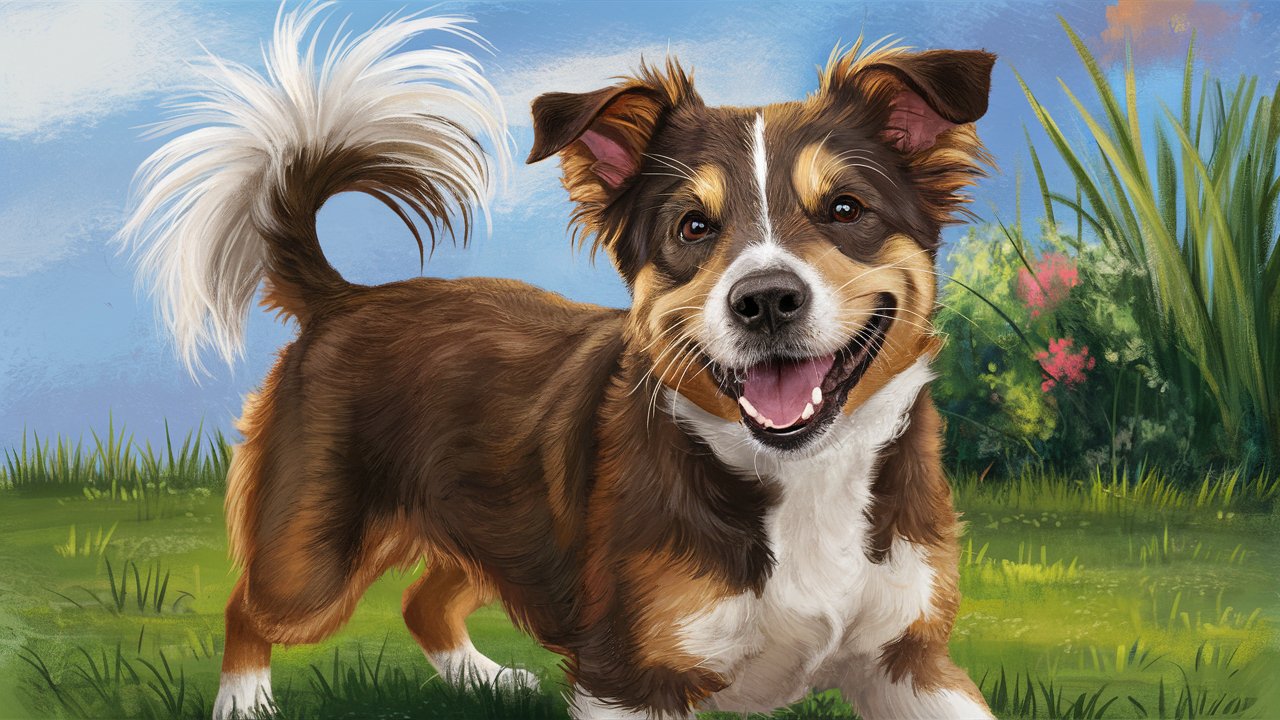
A Day in the Life of a Mudi Owner
Owning dog this breed is an adventure. I remember the first time I brought home this breed, Bella. She was a bundle of energy and curiosity, exploring every corner of the house with her bright, intelligent eyes. Bella quickly became a beloved member of our family, impressing us with her agility and quick learning.
One memorable moment was when Bella participated in her first agility competition. She navigated the course with ease, her curly coat bouncing as she leapt over obstacles. Her enthusiasm was infectious, and she won first place, much to our delight.
The Loyal Guardian
Dog these breeds are known for their loyalty, and my friend Sarah’s this dog breed, Max, is a perfect example. Sarah lives on a small farm, and Max has taken on the role of protector with great dedication. One evening, a stray dog wandered onto the property. Max immediately sprang into action, guiding the intruder away from the livestock and alerting Sarah with a series of barks. Thanks to Max, the situation was resolved without any harm.
The Future of the Mudi
Dog this breed is gaining recognition outside of Hungary, thanks to their impressive versatility and loving nature. Breeders and enthusiasts are working to preserve the breed’s unique characteristics while promoting responsible breeding practices.
Conclusion
The Mudi is a remarkable breed that combines intelligence, agility, and loyalty. Whether you’re looking for a working dog, a sports competitor, or a loving family companion, the Mudi has it all. By understanding their history, characteristics, and care needs, you can provide the best possible life for your Mudi.
